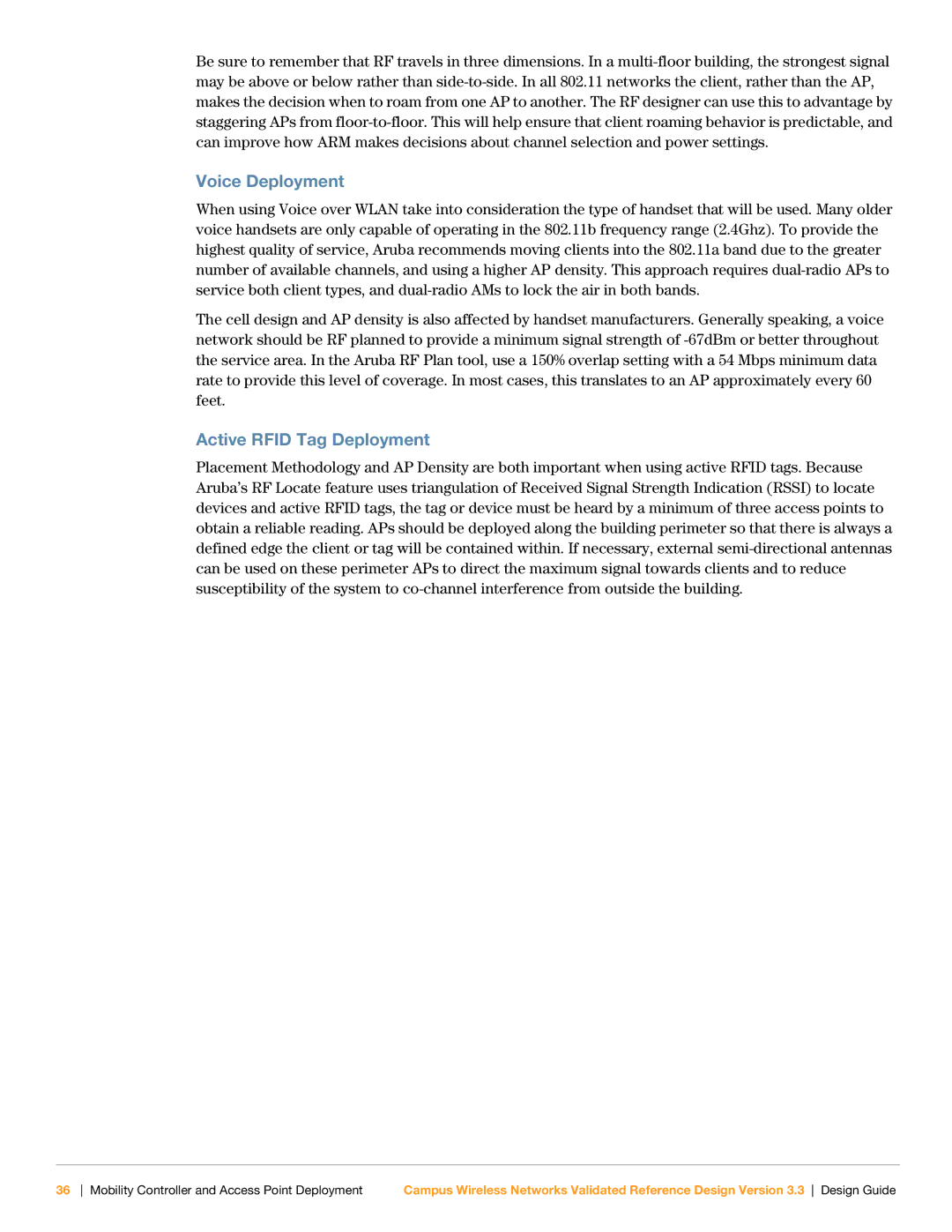Be sure to remember that RF travels in three dimensions. In a
Voice Deployment
When using Voice over WLAN take into consideration the type of handset that will be used. Many older voice handsets are only capable of operating in the 802.11b frequency range (2.4Ghz). To provide the highest quality of service, Aruba recommends moving clients into the 802.11a band due to the greater number of available channels, and using a higher AP density. This approach requires
The cell design and AP density is also affected by handset manufacturers. Generally speaking, a voice network should be RF planned to provide a minimum signal strength of
Active RFID Tag Deployment
Placement Methodology and AP Density are both important when using active RFID tags. Because Aruba’s RF Locate feature uses triangulation of Received Signal Strength Indication (RSSI) to locate devices and active RFID tags, the tag or device must be heard by a minimum of three access points to obtain a reliable reading. APs should be deployed along the building perimeter so that there is always a defined edge the client or tag will be contained within. If necessary, external
36 Mobility Controller and Access Point Deployment | Campus Wireless Networks Validated Reference Design Version 3.3 Design Guide |
